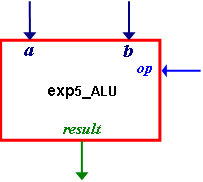

- #HOW TO TAKE 64 BIT SIZE ARRAY IN EMU8086 FULL#
- #HOW TO TAKE 64 BIT SIZE ARRAY IN EMU8086 VERIFICATION#
- #HOW TO TAKE 64 BIT SIZE ARRAY IN EMU8086 SOFTWARE#
- #HOW TO TAKE 64 BIT SIZE ARRAY IN EMU8086 CODE#
For example: Windows XP Professional 圆4 Edition, Windows Vista 圆4, Windows 7 圆4. Accordingly, when we mention Windows operating system, we will mean its 64-bit versions for Intel 64 architecture.
#HOW TO TAKE 64 BIT SIZE ARRAY IN EMU8086 SOFTWARE#
Within the scope of this course we will consider only Intel 64 (圆4 / AMD64) architecture, as the most popular among applied Windows software developers. You should understand that IA-64 and Intel 64 are entirely different microprocessor architectures, and are incompatible with each other. To learn how so many names appeared see the article in Wikipedia: " X86-64". There are many variants of its name, and it causes some confusion, but all these names mean the same thing: x86-64, AA-64, Hammer Architecture, AMD64, Yamhill Technology, EM64T, IA-32e, Intel 64, 圆4.
#HOW TO TAKE 64 BIT SIZE ARRAY IN EMU8086 FULL#


#HOW TO TAKE 64 BIT SIZE ARRAY IN EMU8086 VERIFICATION#
The right holder of the course is OOO "Program Verification Systems".
#HOW TO TAKE 64 BIT SIZE ARRAY IN EMU8086 CODE#
The authors are involved in maintaining the quality of 64-bit applications and participate in development of PVS-Studio static code analyzer for verifying the code of resource-intensive applications.

Questions such as estimation of cost incurred in moving to 64-bit systems, and rationality of such moves, are also addressed. The course is composed of 28 lessons devoted to the introduction to 64-bit systems, issues of building 64-bit applications, methods of searching errors specific to 64-bit code, and code optimization. The course will consider all steps in creating a new safe 64-bit application, or migrating the existing 32-bit code to a 64-bit system. Developers working with other 64-bit operating systems will learn many interesting as well. The course is devoted to the creation of 64-bit applications in C/C++ language, and is intended for Windows developers who use the Visual Studio 2005/2008/2010 environment. However, it hasn't become obsolete and the information given in it is relevant enough for modern Visual Studio versions.


 0 kommentar(er)
0 kommentar(er)
